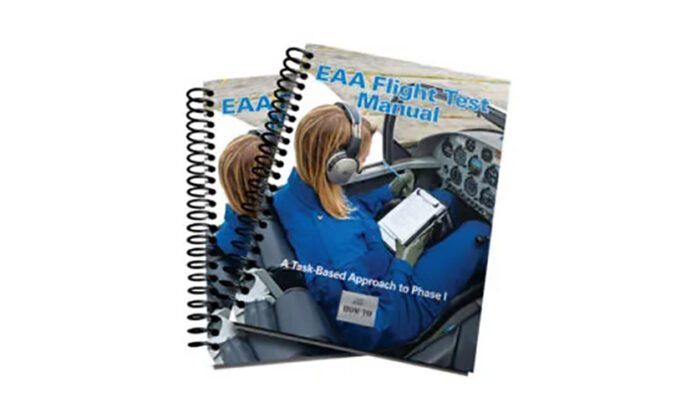A multi-year project between the FAA and EAA has resulted in important changes being inserted into the latest advisory circular pertaining to Experimental/Amateur-Built flight testing. In the latest version of AC90-89 (the C suffix), it includes a task-based Phase I flight test option to the traditional 25- or 40-hour programs. In short, when the tasks are successfully completed, the airplane is released from Phase I flight test.
According to the FAA, the latest version of AC90-89 “attempts to make you aware that test flying an aircraft or ultralight vehicle is a critical undertaking, which you should approach with thorough planning, skill, and common sense. The flight test plan is the heart of all professional flight testing. The plan should account for every hour spent in the flight test phase and you should adhere to it with the same respect for the unknown that all successful test pilots share.”
As part of the changes, a new concept called the Aircraft Operations Handbook has been introduced. The idea is that information gathered during Phase I flight test is fed back into the AOH for the purposes of performance verification and operational cues. (Currently, homebuilts are not required to have a tradition POH [pilot operating handbook] or AFM [aircraft flight manual].) According to the FAA, “This AC also provides criteria for the use of an optional, operationally centric or task-based experimental aircraft flight test plan. This task-based option provides at least the same level of safety and reliability that the existing hourly minimum 25 or 40-hour flight test provides, but with the advantages of having operational completion criteria, a plan to record data for the creation of an AOH, and a flight test report documenting the flight testing results.” EAA and industry generally have been proponents of the flight-test cards and structured program as a more useful alternative to “free form” types of Phase I flight test.
Compliance with the new system requires use of the EAA test cards and alterations to the operating limitations. According to EAA, “In order to utilize the task-based flight testing program, the aircraft must have an operating limitation that allows the program’s use. Operating limitations are issued along with the airworthiness certificate by the FAA or DAR as part of the airworthiness certification process. EAA expects that the FAA will update policy on operating limitations soon so that the standard operating limitations will include the task-based Phase I authorization language. If you are currently in Phase I flight testing or plan to have your aircraft inspected soon, email [email protected] for details on how to obtain the new task-based Phase I operating limitation.”
This article originally appeared KITPLANES. For more great content like this, subscribe to KITPLANES!



































This is great news and should provide a better result from Phase I testing. One minor correction to your article though. The AC does not “require” the use of the EAA test cards. Paragraph 4 on page ii of the AC says it “describes an acceptable means but not the only means
You are correct that the AC is “not the only means” but it is (very importantly) an approved means. If you follow the AC, you are using a process that is approved by the FAA. If you choose to deviate from the AC, you are responsible for convincing the cert authority that your process meets the intent of the rules. In this case, that would mean getting your alternate set of test cards approved as part of your plan. There’s a reason even the big corporations follow the ACs as they are written. It’s the easiest and cheapest way to get through certification.